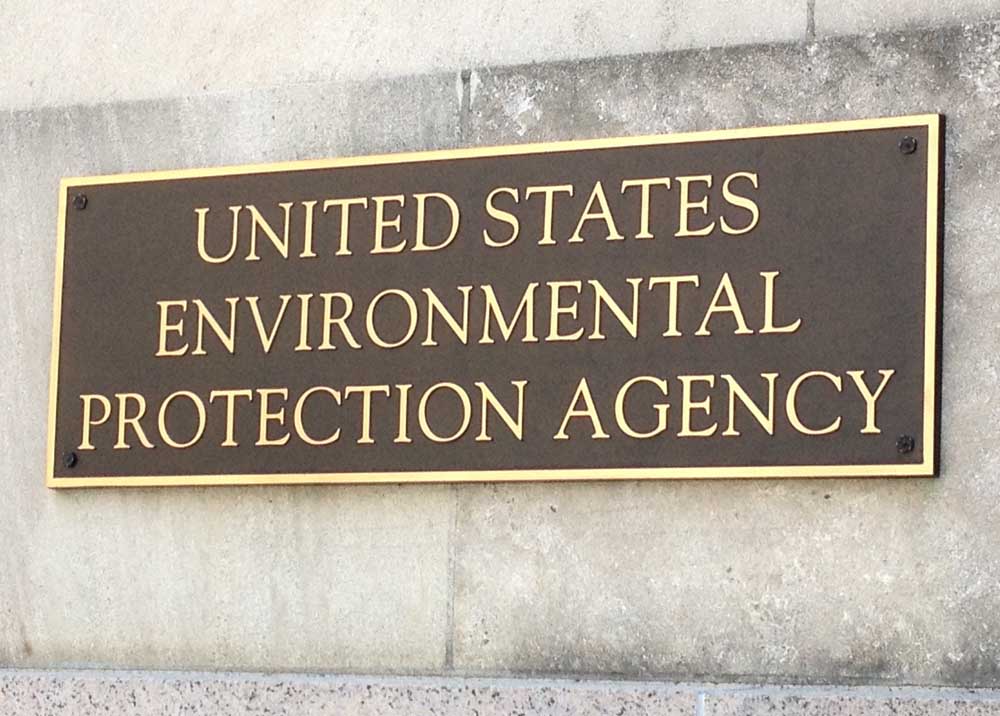Farm groups take fight for chlorpyrifos to Midwest court
Published 5:00 pm Sunday, March 27, 2022

- Congress has voted to scrap new Clean Water Act rules drafted by the EPA and the Corps of Engineers. President Obama says he'll veto the measure.
A chemical company and 19 farm groups, including the American Farm Bureau, are suing in a Midwest federal appeals court to overturn the Environmental Protection Agency’s ban on the pesticide chlorpyrifos on all food crops.
Gharda Chemicals International, the largest supplier of chlorpyrifos products in the U.S., and the farm groups claim the ban is too broad and that the EPA ignored its own science.
They seek to at least keep the pesticide legal on 11 crops in select states, including strawberries in Oregon and apples, alfalfa, sugar beets in Idaho, Oregon and Washington.
The EPA identified the crops and geographic areas in 2020, proposing to reduce exposure to chlorpyrifos by limiting the pesticide to “high-benefit” crops. The EPA estimated alternatives to chlorpyrifos would cost apple growers $51 an acre.
Instead of narrowing uses, the EPA banned chlorpyrifos on all food, effective Feb. 28, capping a legal and scientific battle that began in 2007 when two advocacy groups petitioned the agency to ban the pesticide.
Chlorpyrifos has been used in U.S. agriculture since 1965 and is registered for more than 50 uses. The suit argues EPA should have evaluated the uses separately.
“If all tolerances must rise or fall together, EPA would have to revoke all tolerances for any pesticide every time it concluded an individual tolerance was unsafe. That makes no sense,” according to the lawsuit.
Douglas County, Wash., tree fruit orchardist April Clayton said March 23 that her farm used chlorpyrifos to attack leafy hopper and mealybug, the insects that cause little cherry virus and Western X.
Chlorpyrifos was used before bees were in the orchards or fruit was on the trees, she said. “This product isn’t actually going to be sprayed on the food,” she said.
Chlorpyrifos rotated with other pesticides to keep the bugs from building up resistance, she said. “Losing this tool will be a burden,” she said.
In response to the new lawsuit, the EPA said it didn’t have time to finalize its tentative proposal to confine chlorpyrifos to 11 crops. The agency was under a deadline set by the 9th U.S. Circuit Court of Appeals to ban chlorpyrifos or declare it safe.
The EPA notes in court documents that the agricultural industry did not rush to embrace the 11-crop limit.
Some groups, such as cranberry and banana farmers, wanted to be included, and no chemical company volunteered to cancel other uses, according to the EPA.
“In order to retain those 11 uses, all other uses would need to be cancelled,” stated Timothy Kiely, deputy director for the EPA’s Pesticide Re-evaluation Division, in a court declaration.
Beginning in the Obama administration, the EPA resisted pressure from the 9th Circuit to act on chlorpyrifos. The court never ordered the agency to ban the chemical, but made clear its preference.
The 9th Circuit’s last decision, issued in April 2021, was written by Jed Rakoff, a U.S. district judge for Southern New York, who was a visiting judge on a three-judge panel that heard advocacy groups argue for a ban.
EPA’s delays “exposed a generation of American children to unsafe levels of chlorpyrifos,” wrote Rakoff, who gave the agency 60 days to ban or modify chlorpyrifos’ uses. A dissenting judge said the deadline likely made a ban inevitable.
The new lawsuit shifts the issue to an appeals court that covers Arkansas, Iowa, Minnesota, Missouri, Minnesota, North Dakota and South Dakota.
The other farm groups in the chlorpyrifos lawsuit are:
American Crystal Sugar Co., American Soybean Association, American Sugarbeet Growers Association, Cherry Marketing Institute, Florida Fruit and Vegetable Association;
Georgia Fruit and Vegetable Growers Association, Iowa Soybean Association, Minn-Dak Farmers Cooperative, Minnesota Soybean Growers Association, Missouri Soybean Association;
National Association of Wheat Growers, National Cotton Council of America, Nebraska Soybean Association, North Dakota Soybean Growers Association, Red River Valley Sugarbeet Growers Association;
South Dakota Soybean Association, Southern Minnesota Beet Sugar Cooperative and United States Beet Sugar Association.





